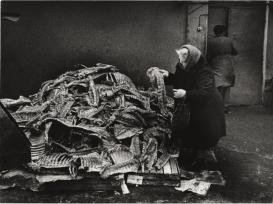It is not the couch, bed, or car seat, but rather the toilet on which our comfort and privacy are practiced and confirmed. Having a designated place to discard our bodily waste is considered crucial for evaluating the right to be human. Indeed, one might say that the domestication of the toilet is the crux of modernity. Home- and particularly flush-toilets are not only symbols of modernity, but the starting (or end) points of complicated technological infrastructures, constructed on the basis of particular understanding of value, order, and disease. As historians of technology and public health demonstrate, the history of toilets is also intimately connected to that of power and imperialism.
Little is known, however, about how transformational the process of separating the waste from its human or animal body of origin has been. The Bodily Waste project is based on the assumption that throughout most of world history, the substances that exited the body were far from what we consider to be waste materials. They were (and sometimes are), instead, useful and important for many worlds of knowledge and practice, from agriculture to house making to medicine and magic. This history of use and value challenges our assumptions about trash and the limits of the body. It illustrates how the waste of the body, along with many other materials deemed futile, was invented in modernity. This invention had far-reaching cultural, technological, and environmental consequences: letting go of the value of bodily materials (e.g., such as urine, spittle, or menstrual blood) meant recruiting precious resources to separate, hide, and discard them; losing their value, such materials became a sensorial nuisance and caused disgust and repulsion.
Nevertheless, this process is far from being linear or complete. Given the multiplicity of modernity and the hybrid character of vernacular landscapes of knowledge, one can speak of multiple approaches to and understandings of bodily excreta in particular contexts. Both colonial and postcolonial situations, frameworks of cutting-edge experimental medicine, alternative healing, new-age ideologies, or the grassroots movements of empowerment, may either bring into existence seemingly forgotten uses, meanings, and emotions, related to bodily substances, or produce new ideas and approaches towards them. By analyzing the myriad uses and meanings of bodily materials we now consider to be waste, project participants search both for the meaning and consequences of this historical process and for the specific frameworks which allow the body products to acquire new meanings.

